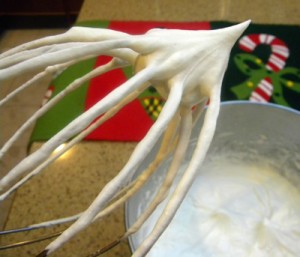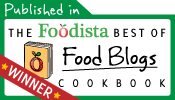Category — tips
canning
About 10 years ago I was completely intimidated by, even the thought of, canning. It had never occurred in my house while growing up and the process of sterilizing the jars seemed like rocket science to me! Then something happened so that I could no longer avoid it. We had a peach tree in our yard and branches were breaking off the tree on a daily basis from the weight of so many ripe and juicy peaches. And guess what? I discovered that not only was canning no big deal or some painstaking process, it was actually fun!
This sauce is wonderful when eaten either savory or sweet. I use it as a glaze and accompaniment for baked ham during the holidays. When heating the sauce to glaze the ham, just stir in one finely minced jalapeno pepper to spice it up a bit.
It is unbelievably delicious and decadent when warmed and spooned over grilled bananas, along with a little warm caramel sauce!
Or use it at room temperature or cold spooned over ice cream or stirred into plain or vanilla Greek yogurt.
The darling little canning jars make a cute name “place card” or party gifts to hand out to your guests as they are leaving your home after a special dinner or holiday meal. Happy canning!
February 10, 2010 No Comments
FAQ
Two of the most “frequently asked questions” I get when I’m entertaining or teaching a cooking class, “Do you eat like this every night!?”… and… “What kind of things do you make for weeknight dinners?” The answers: “No, I only eat like this when I’m entertaining or teaching a class.” and “The sort of things I make for weeknight dinners are dishes that come together without having to make a special trip to the grocery store!”
This pasta is exactly that sort of dish. If you were to drop by my house and look in my fridge, you’d always find things like fresh spinach, romaine or mixed greens, basil, citrus, and bell peppers. And my freezer is never without IQF (individually quick frozen) shrimp, scallops, and chicken breasts. The pantry is stocked to the brim; a variety of pasta, jars of olives, artichokes, sun-dried tomatoes, capers, and the list goes on. When your kitchen is stocked in this way, the possibilities are endless and you’re always able to make a meal without the trip to the store.
I know exactly what you’re saying to yourself now…”Sure, the possibilities are endless… for you, because you can just ‘make up a recipe’ without a cookbook.” And that is true, but I’m going to turn you on to a website where you can just plug in one of the ten ingredients you have on hand, and magically dozens of recipes will appear so that you can make with what you have! In fact, I went there and put in all the ingredients from this pasta recipe and it came up with 88 different recipes for me! Sounds awesome, doesn’t it!?! CLICK HERE for that link. Next, be ready to cook that way, by going to my Basic Pantry (just CLICK HERE) and stock up, so you can create something new “at the drop of a dime” too.
P.S. This pasta is a great vegetarian dish, just leave out the shrimp!
P.S.S. The live TV shoot yesterday went swimmingly, if you would like to view it, go to the “In The News” page up at the top-left of this page and choose the Valley Dish – Ravioli Lasagna post.
[Read more →]
January 21, 2010 2 Comments
olive, canola, peanut, corn… what oil if best?
Different fats and oils have different uses. Each performs best within a certain range of temperature. Some are made for high-heat cooking, while others have intense flavors that are best enjoyed only lightly heated or uncooked and straight from the bottle drizzled on food or used in vinaigrettes.
As with many Asian recipes, today’s calls for peanut oil. Especially in stir-fry, peanut oil is the fat of choice. It has a higher smoke point than many other oils and lends a light peanut flavor that complements so many Asian-inspired dishes. The smoke point of an oil or fat is the temperature at which it gives off smoke when heated.
Other important considerations are food allergies and the type of fat the oil contains; saturated, polyunsaturated, or monounsaturated. Here are the differences, straight from the American Heart Association.
“Saturated fat: Saturated fat is the main dietary cause of high blood cholesterol. Saturated fat is found mostly in foods from animals and some plants. Foods from animals include beef, beef fat, veal, lamb, pork, lard, poultry fat, butter, cream, milk, cheeses, and other dairy products made from whole and 2 percent milk. All of these foods also contain dietary cholesterol. Foods from plants that contain saturated fat include coconut, coconut oil, palm oil, palm kernel oil, and cocoa butter.
Polyunsaturated and monounsaturated fats: Polyunsaturated and monounsaturated fats are the two unsaturated fats. They’re found in many fish, seeds, nuts, and oils from plants. Some examples of foods that contain these fats include salmon, trout, herring, avocados, olives, walnuts, and liquid vegetable oils such as soybean, corn, safflower, canola, olive, and sunflower.”
[Read more →]
January 12, 2010 1 Comment
spicy and sweet…yin and yang
Today I’m driving up to Flagstaff to deliver Connor back to NAU to finish his freshman year. I can not begin to believe it is already half over! So last night, the four of us had what will be our last family dinner all together for quite a few months. Dave had been craving ribs and since we haven’t had anything but traditional “American” or southwest foods recently, regular old barbecue was out of the question, Asian flavors fit the bill.
A couple of ingredients you may or may not be familiar with are Chinese five-spice powder and Sriracha Hot Chili Sauce. Chinese five-spice is a mixture of ground spices (cassia cinnamon, cloves, star anise, Szechwan peppercorns, and either ginger or fennel) that combine the five primary flavors of Chinese cuisine: sweet, salty, sour, bitter, and spicy (or pungent). This follows the Chinese philosophy of balancing the yin and yang in food. Works perfectly with my philosophy in food too; that it tastes great!
Sriracha Hot Chili Sauce (also known as “Rooster Sauce”) is a must-have for your pantry and is one of your best friends in the kitchen. There is really no need for me to wax poetic about its attributes and qualities since there is a fabulous article in this month’s issue of Bon Appétit, which will inform you more than you may ever need to know about “Rooster Sauce”. Click this LINK to read the article and see a bottle, so you know what to look for at the grocery store.
Plus this recipe works into our “easy-breezy” category, just be sure to plan ahead, 12 to 24 hours ahead, to allow the ribs to marinate and soak up all the great Asian flavors.
January 9, 2010 2 Comments
fresh and light
My various citrus trees are producing pounds upon pounds of citrus. The oranges, lemons, and grapefruit are being picked and eaten or used in cooking daily. The limes, blood oranges, and Meyer lemons aren’t quite ready yet, and I’m grateful for that, I can’t keep up as it is! So don’t be surprised to see citrus popping up in just about every post from here on out, for months to come.
To kick it off here is a quick and light salad using another couple of favorites; avocado and fennel. The fennel bulb, fronds (leaves), and seeds are used in cooking. The bulb is a crisp, root vegetable and may be sauteed, roasted, stewed, braised, grilled, or eaten raw. The fronds are delicately flavored and look very similar in shape to dill. The seeds are used either fresh or can be found dried in the spice aisle. The hollow stems are tough and stringy and are usually discarded or used in making vegetable stock. Fennel pollen is actually the most potent form of fennel but is very expensive and difficult to find. Fennel grows like a weed, so be sure to cultivate the pollen yourself, if you grow fennel in your garden, it is amazing! For this salad, we’re using the bulb and a few of the fronds, as garnish. If you can not find, or do not want to pay the price for, blood oranges or Meyer lemons, use regular oranges and lemons instead.
January 6, 2010 1 Comment
vegetarian or not
Ahh, to be able to eat and live a vegetarian lifestyle! It is something I often think about, but in the middle of the thought process, the answer is always, “Yeah, I don’t think so!” I’m Irish, I’m a meat and potatoes girl, a carnivore at heart. There aren’t many meats I haven’t or wouldn’t eat. My daughter, Marissa, was vegetarian for a couple of years, back in high school, and what a pain it was, for me – the mom, the cook! But in reality, I would love to give it a try – so to that end, my goal this year is to eat “vegetarian” at least one meal a day (not that hard, when you count in breakfast!) and to make dinner, that one meal a day, at least twice a week. To that end, a new “Vegetarian” category has been added to The Recipe Index on the left.
On the Tip Index, at the left, there is already a listing and link for “roasting peppers” plus there are additional pictures here. So if you need a refresher on the process, check out the previous listing on the Tip Index.
[Read more →]
January 5, 2010 6 Comments
a “manly man” salad
Isn’t it strange how sometimes you go out for dinner and you are drawn to order the same thing at one restaurant and then another? Recently, that item for me has been candied pecans. I use candied pecans often at home as well, but there is always something a little different about the ones I get while eating out. I finally asked a chef friend, what the difference was. He informed me that restaurants often first candy the nuts and then fry them. That makes sense since I often wondered how their pecans were so much more “toasted” than mine. If you would rather not fry the nuts, just go to this previous post for candied almonds, and substitute pecans for the almonds.
You may be able to find balsamic glaze at the grocery store, I know that Trader Joe’s carried it at one time, not sure if they still do, but it is easy to make at home and easy to store extra for use again later. I served this salad to three men last night, and in their honor, since they are “manly men”, this is now referred to as a “manly man” salad!
[Read more →]
January 3, 2010 2 Comments
what is crème fraîche?
This lovely red soup is perfect for Christmas or Valentine’s Day. It is decorated with crème fraîche.
Crème fraîche is a thinner form of sour cream developed by the French. It has a slight tanginess because it contains bacterial cultures. But the amounts of cultures are far less than those in sour cream, so it has a smoother taste. One of the advantages of crème fraîche is that it doesn’t “break” as sour cream may when added to sauces. This is due to its higher fat content.
Crème fraîche is becoming more and more available in stores, but is still just as easy to make at home. To do so; pour 1 cup heavy cream into a jar, add 1 tablespoon buttermilk, cover, and shake. Leave covered, on the counter, in a room temperature draught-free place for 24 hours. It is ready when it is thick. Do not worry about the cream going bad, the benign live bacteria in the buttermilk will multiply and protect the cream from any harmful bacteria. After the 24-hour “counter time” place it in the refrigerator. It will continue to thicken and take on a more tangy flavor as it ages. Crème fraîche will keep in the refrigerator for 7-10 days.
[Read more →]
December 29, 2009 No Comments
the toffee queen
My friend and co-worker, Kim Howard, makes the very best toffee every Christmas. I was a lucky recipient of a tin of her toffee this year – but after days of picking away at it, it’s all gone. I was at her beautiful home yesterday and saw 4 new pans of the detectible toffee sitting on her counter, ready to be cut and packaged for her other happy friends and family – darn, why did I eat all of mine already?! There is an upside though, it reminded me of the recipe for these wonderful toffee scones and I just knew I had to share them with you! Kim, “The Toffee Queen” would want me to!

Barbara Pool Fenzl and Kim Howard at our amazing spa trip at Rancho LaPuerta in 2008
If you don’t have the good fortune to be in line for a tin of Kim’s toffee, or if you have sadly already eaten your share – Trader Joe’s sells a couple of great options. The type of theirs I like the best is not only chocolate-covered but also covered in nuts. If you don’t have a Trader Joe’s in your area (I am truly sorry and feel your heartache), Heath bars work perfectly well for these scones.

The only liquid in the scones is cream, whipped to stiff peaks. The way to find out if the whipping cream has stiff peaks and is ready; while beating, once the cream begins to look fluffy, remove the whisk attachment from the mixer, dip it into the whipped cream (or egg whites, when whipping them for a recipe) pull out the whisk and turn it upright. If the peak flops over, you have soft peaks.

Return whisk to machine and continue to beat. If the peak stands straight up, you have stiff peaks and are ready to fold the whipped cream into the dry mixture.

Another fantastic thing about these scones – is they qualify as “easy-breezy”!
[Read more →]
December 17, 2009 No Comments
blind baking + Christmas bonus
Quiche is such a versatile dish. It is perfect for breakfast, brunch, lunch, or dinner. It’s wonderful on it’s own or alongside a salad, drizzled with a vinaigrette. Delicious served hot from the oven or at room temperature… No wonder real men not only eat but love quiche! Bake this the day ahead, reheat and enjoy on Christmas morning as gifts are being opened.
Believe it or not, I’ve never used a frozen pie crust before. I really enjoy making crust from scratch, but a friend told me that the new pie crusts at Trader Joe’s were as good as homemade, so thought I’d give them a try with a quiche recipe. Here’s what I’ve discovered; the frozen crusts look great, you can see the little bits of real butter in the dough, just as with homemade dough, a good start! After reading the ingredients, found there is palm oil… not good… but it is the third to the last ingredient listed with only water and salt after it, so I’m hoping it isn’t too much in there. The crust shrunk quite a bit more than a homemade one would during the blind bake, but the real test – the taste? Pretty darn good, I’d give it about an 8 out 0f 10, with the homemade crust being a perfect 10.
So what exactly is blind baking? It is when you bake and brown a crust without the filling. Blind baking a crust is necessary when it will be filled with an unbaked filling or when the filling has a shorter baking time than the crust needs to become cooked through. Blind baking also helps prevent the crust from becoming soggy from its filling. To accomplish this you can either poke the uncooked pastry with a fork or line the pastry shell with foil or parchment paper and weigh it down with ceramic or metal pie weights. This allows the steam created by the butter to escape in the case of poking or prevents the crust from puffing up, when weighted. If you do not want to invest in pie weights, no problem, just weigh down the shell with dry beans or raw rice. You can use the beans or rice a couple of times for this purpose, but after that, toss them in the trash. As they bake over and over, they will lose their natural moisture and no longer be heavy enough to be effective.
The technique for caramelizing the onions for this quiche is different than the methods I’ve posted here before. Adding water and bringing the onions to a boil, allows the onions to completely soften without a chance of burning. Once the water has dissipated, the onions caramelize evenly and easily.
[Read more →]
December 16, 2009 6 Comments




